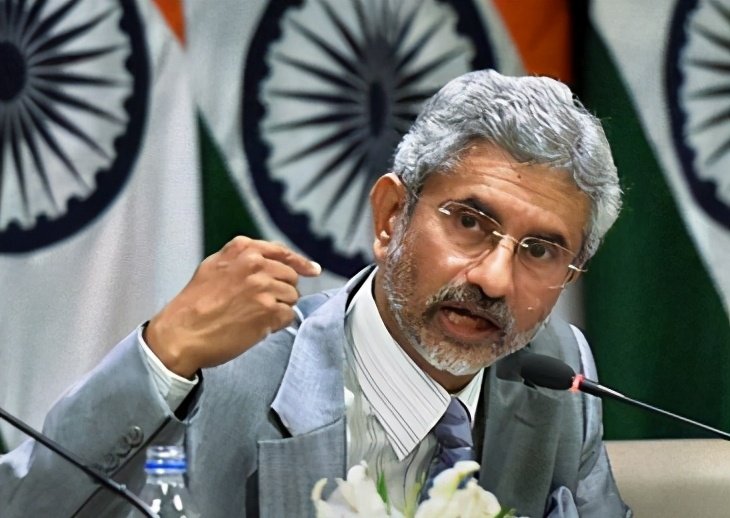Global Network reported on November 18 that China and the Association of Southeast Asian Nations are proposing a code of conduct in the South China Sea, considering restricting military exercises around the South China Sea to cool tensions in the region. Unexpectedly, India, far away from South Asia, was not happy and claimed reservations about some of these provisions. Indian media believe that these provisions may harm India’s interests.
According to the report, Indian Foreign Minister So Jiesheng complained during his participation in the 15th East Asia Summit that the code of conduct “should not harm the legitimate interests of third parties and should be fully in line with the United Nations Convention on the Law of the Sea (UNCLOS). India even brazenly proposed to establish an air defense identification zone (ADIZ) covering the Paracel Islands, the East and Spratly Islands.
Seeing this, the author really spent a lot of effort to suppress the impulse to spit fragrance. The South China Sea issue is originally a matter between China and the alliance. Even if it is talked about it, it is also a conversation between China and ASEAN countries. As an extraterritorial country more than 2,000 kilometers away from the South China Sea, India has made such irresponsible remarks on the South China Sea issue, and even publicly requested the establishment of ADIZ in the South China Sea. At best, it is not self-reciated. I have become an outsider. It’s arrogant to say it unpleasantly.
The South China Sea issue is not controversial. China’s governance of the South China Sea can be traced back to the Tang Dynasty. At that time, Xisha and Nansha Islands were collectively referred to as “Thousand Li Shitang, Ten Thousand Li Changsha”.
In 1946, the then government of the Republic of China sent General Lin Zun to lead the Second Fleet of the Navy to survey the South China Sea and draw 11 lines. As a result of the completion of the boundary survey in the Gulf of Tonkin, the original 11th section line became what is today’s 9 section line. To this day, the nine-duan line has always been the basic legal basis for China’s sovereignty over the South China Sea.

Although the countries around the South China Sea became independent one after another, no country questioned China’s sovereignty over the South China Sea at that time. Since the discovery of a large amount of oil resources in the South China Sea in the 1970s, neighboring countries have begun to occupy China’s Nansha Island and Reef one after another.
Due to the insufficient national strength and naval strength at that time, a large number of islands and reefs were occupied by other countries, and the South China Sea issue emerged.
With the rise of China, the United States, out of consideration of safeguarding its hegemony, has continuously incited the neighboring countries of the South China Sea and China as enemies, making the South China Sea issue more and more acute.
However, after a series of reasonable, beneficial and moderate struggles, the situation in the South China Sea is improving. Among neighboring countries, including Philippines, which was once hardcore pro-US, no longer followed the baton of United States, but engaged in extensive negotiations with China to reduce the sovereignty dispute in the South China Sea by strengthening cooperation.
Is it the sudden conscience of the countries around the South China Sea that they are willing to recognize China’s sovereignty in the South China Sea? No! The reason is that the strength comparison has changed, especially the Chinese navy’s control ability in the South China Sea has been fundamentally changed. Even no matter how many fleets the U.S. military sends to the South China Sea, HOLD can’t stand it.
Over the years, the Chinese navy has served a total of about 26 Type 054A frigates, 22 Type 052C/D Aegis, 1 Type 055 large Aegis ship, 2 aircraft carriers, 8 large dock landing ships of 071… Strong national strength and a huge naval fleet make the countries around the South China Sea have to sit down. The only way to negotiate with China is to go.
However, not all countries want to see the situation in the South China Sea calm down.
The United States is the most prominent one, using the South China Sea issue to incite the flames and create friction between ASEAN and China.
There is another country that is unwilling to accept the calmness of the South China Sea, that is, India. Of course, it is difficult for New Delhi to keep up with their ambitions.

India and the South China Sea are not only completely irrely unrelated, but also have no ability to get into the Guide Sea. Although the Indian navy is still strong around the Indian Ocean, it is still far from going to the South China Sea.
Maybe I’m used to being a Turkish emperor in the Indian Ocean and know nothing about real strength! The whole family of the Indian navy can’t catch up with a fleet of the Chinese navy.
India openly intervened in the South China Sea and put forward the so-called South China Sea ADIZ plan, which is essentially a bad problem left by the British colonial period.
There is actually another reason why India intervenes in the South China Sea issue: In 1962, India’s whole country was psychologically shadowed by China, so it has been looking for opportunities to try to save its face. Because the border war took place on the land battlefield, the Indian navy has not lost to China.
The curry-flavored confidence can be smelled across the Indian Ocean.
After all, the South China Sea is a matter between China and ASEAN. Even if the United States tries its best to stir up the flames, it will not be ignored, and it is not to fear just one India.



